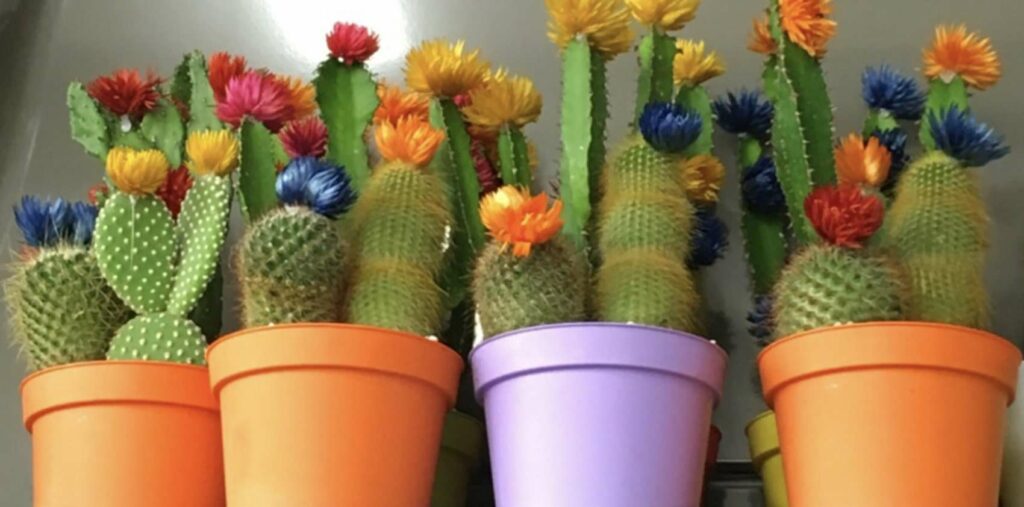Cacti are one of the simplest-to-care-for plants. Plus, they make great houseplants since they’re incredibly stylish!
In this guide, we will delve into how to water and maintain your cactus properly so that it grows beautifully and lasts long.
But before that, get to know the cactus better with its botanical traits below.
Cactus General Information


Family: Cactaceae
No. of genera: 140
No. of species: 2,000
Plant type: Succulent perennial
Native habitat: All across North and South America
Preferred environment: Desert-like, hot, and dry places
Blooming period: Summer
Growing location: Indoors or outdoors
Cacti plants are part of the family Cactaceae. This family is extensively made up of about 140 genera and 2,000 species.
This type of plant is very common and found across all of North and South America. It inhabits many dry, subtropical, and tropical areas in these regions.
Cacti can be grown outdoors or indoors given the right conditions. They are known to be slow growers, with some taking as long as half a century to mature!
Some select species can bear wonderful vivacious flowers, including the Mammillaria, Notocactus, and Parodia.
What is the difference between a cactus and a succulent?
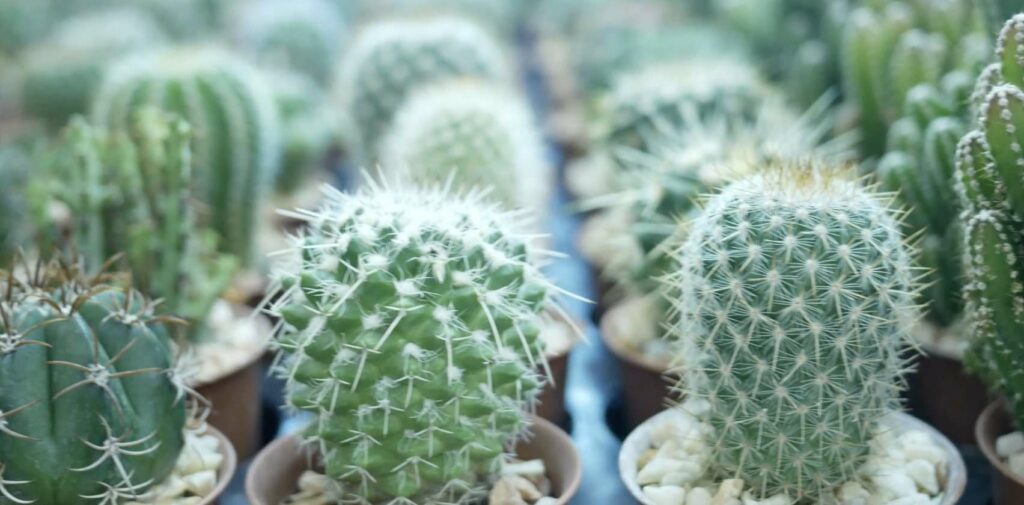

Although cacti are classified as succulents with water-retaining thick and fleshy leaves, cactus plants have distinguishing traits compared to other succulents.
That is almost all cacti have prickly spines or bristles as well as plant hair growing from soft and cushiony structures called areoles.
There are no leaves present in the cactus, which makes it lose a lesser amount of water. In place of them, its stems receive solar energy enabling the plant to carry out photosynthesis.
Furthermore, the cactus’ root structure is different from most plants in that it is shallow, thin, and fibrous.
Also, the spiny plant’s delicate outer skin ranges in color from light green to different shades of gray and almost blue.
How much water does your cactus need?


A good rule of thumb for watering cacti is to give them 1/2 or 1/4 cup of water every week when the soil has become dry to the touch.
That said, in the winter, reduce your watering to once a month and once every six weeks for desert cactus species.
It’s also beneficial that your chosen pot vessel has drainage holes in them. The water should come out from them when you hydrate the plant.
Don’t water more than the cactus needs since it will drown, which leads to bacterial rot or fungal spots. If this is not fixed soon, then the cactus will badly suffer and eventually die.
When is the best time to water your cactus?
The best time to water your cacti is in the morning preferably between 7:00 am and 2:00 pm. This gives them the chance to dry out in the sun so that no excess moisture will be trapped in them.
Forecasting can help too. If the weather will be cloudy and rainy for most of the day. It’s best to water it less enough for its requirements or just postpone for the next day.
What happens to a cactus with too much water?
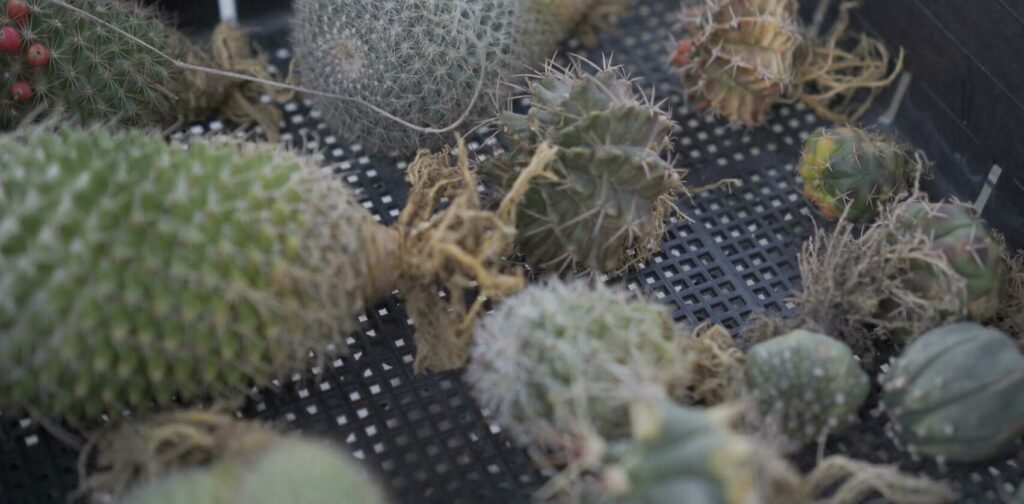

Overwatering will harm a cactus. These are some of its negative effects:
- Fungal Damage
When you pour too much water on your cactus, it can suffer fungal damage. You’ll surely know this if you see black and sunken spots on the cactus stems.
Without remedying the plant, these spots will weaken the stem enough to make it soft and pulpy.
So the best solution for this is to repot the cactus in new potting soil when you notice that it’s been overwatered.
- Bacterial Damage
Bacterial rot can be brought about by different types of bacteria that enter wounded cactus stems.
They then produce a toxic substance that destroys the part of the plant between the cells. And from the outside, a black liquid will ooze out from the plant, making it weak and mushy.
Once you observe the plant is afflicted with bacterial rot, move it away immediately from the other plants lest they get infected too.
And then, treat the affected plant and sterilize your garden tools with diluted hydrogen peroxide to eliminate these harmful bacteria.
Bear in mind, though, that it’s most often wise to just dispose of the infected plant. But first, place it in a plastic bag to avoid bacterial transfer to other people and places.
How do I know if my cactus is too dry?
Cacti may not need a lot of water, but underwatering them is dangerous too. Here are the signs of a dehydrated cactus:
- Shriveling or Puckering Cactus
Cactus and other succulents have plump and fleshy foliage that stores moisture from the air.
This is what makes them need less water than other plants. In times of drought, they drink from their water reserves to replenish their energy and continue to grow.
But when they’re not given enough water and moisture for them to store, you should start to notice them shriveling and puckering. Giving them what they need will get them back to normal.
- Discolored Cactus
If a cactus is insufficiently watered, it can also show discolorations. You will see the plant becoming brown, dry, and even calloused.
As soon as you notice this, give the cactus a drink to restore it back to health and all its glory.
What’s the best soil to put cacti in?
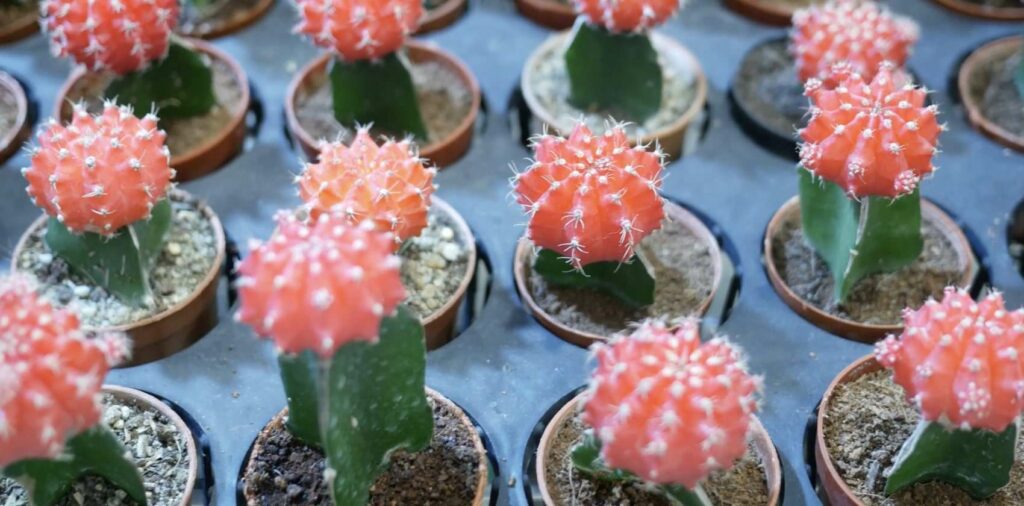

The best soil to put cacti in is one that is similar to the soil in their native habitat which is porous and drains excellently.
A well-draining soil for a cactus will let the water flow through it at a quick rate. It will prevent the soil from holding a lot of moisture and becoming sodden as a result.
Besides water and sunlight, plants need air to survive. So having a loose soil structure allows oxygen to reach the roots, helping the cactus to breathe and photosynthesize.
What ingredients should I use to make cactus soil?
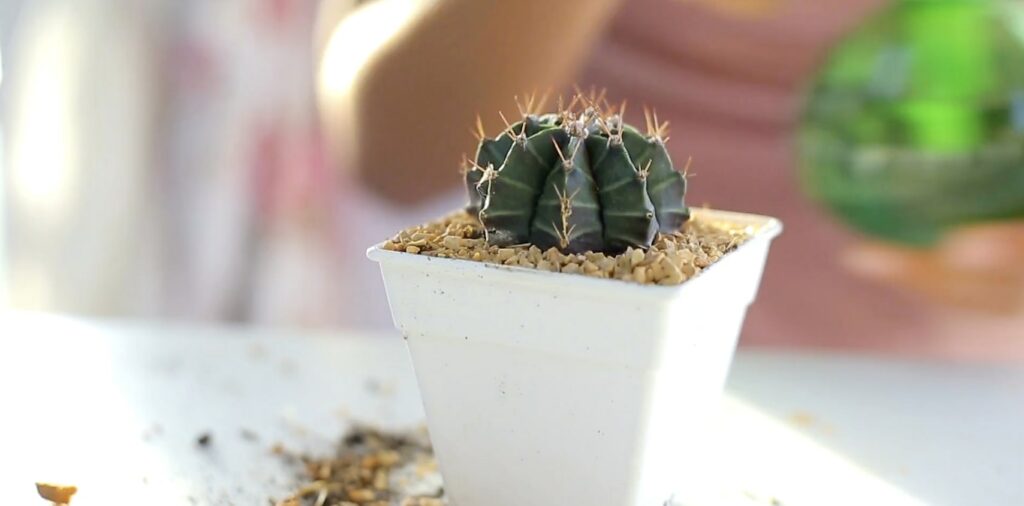

A great cactus soil usually consists of a blend of both organic and inorganic materials which give it all the desired qualities for the cactus to thrive.
Some examples of organic ingredients are potting soil, peat moss, and pine bark, while inorganic ones include sand, grit, pumice, and perlite.
Here’s how these soil elements benefit the cactus soil:
Organic Soil Ingredients
- Potting Soil – This is a certain mix of soil material that has some drainage and aeration qualities.
This soil is often amended with compost to improve it even more in terms of nutrient content, water infiltration, and soil looseness and stability.
- Peat Moss – Found underwater in peat bogs, peat moss is the byproduct of decayed Sphagnum moss.
It is a wonderful addition serving to soften the cactus soil and improve its drainage.
- Pine Bark – It consists of crushed pine bark obtained from evergreen pine trees and shrubs.
It contains a special substance called lignin, which prevents the soil from compacting and aids air and water porosity.
Inorganic Soil Ingredients
- Sand – Sandy soils don’t hold a lot of water because their particles have a low surface area. This is exactly what cacti and succulents prefer.
- Grit – It is a heavy mineral made up of sand, cinder, gravel, and other inorganic materials.
It prevents soil from hardening, enhances water and air passage, and dries out quicker.
- Pumice – This is composed of small igneous rocks that solidify during volcanic eruptions. It offers a few good benefits to the soil.
These include maintaining the soil structure to prevent the soil from staying wet and facilitate drainage and moisture retention.
- Perlite – Similar to pumice, it’s a type of small volcanic rock that’s added to garden soils. It works in three ways: to improve drainage, water retention, and aeration.
How to Make Your Own Cactus Soil Mix
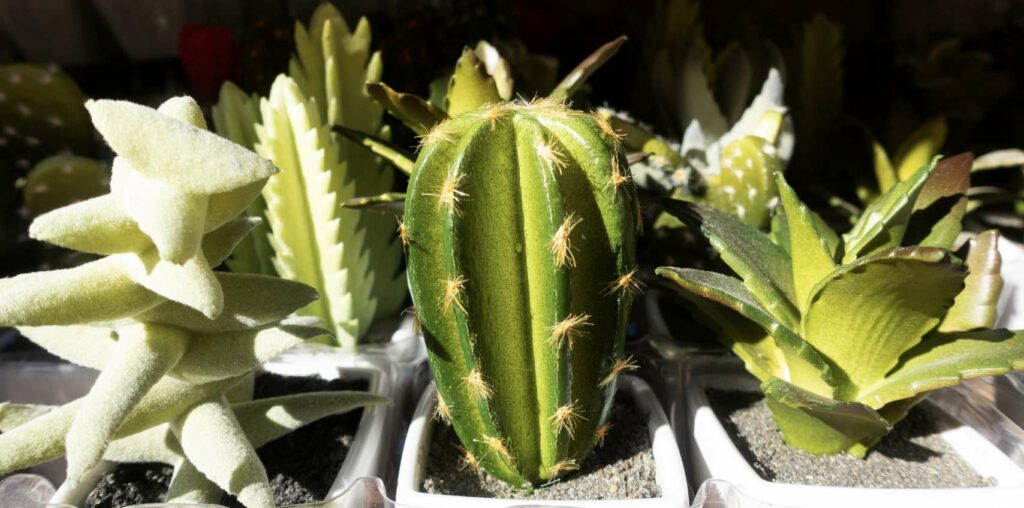

Here’s how you can create your own cactus soil at home:
- 3 parts potting soil
- 3 parts coarse sand
- 1 part perlite or pumice
- 1 part pine bark (optional)
The first recipe is a simple one made with only a few ingredients at the most. Just combine 3 parts of potting soil, 3 parts of coarse sand, and 1 part of perlite or pumice.
You may or may not add pine bark for that extra kick in helping the plants to breathe through their roots.
This soil-based recipe is perfectly balanced in drainage and aeration. The water will flow through the soil at a good rate that won’t leave the soil too wet.
Can I use a commercial soil mix for my cactus?


You can use a commercial soil mix for cacti, but you would have to pick it carefully. Choose one that’s specially designed for cacti which should safeguard against accidentally overwatering them.
Do not ever use garden soil or dirt from your backyard because they are dense, compact, and won’t let ample air and water in.
Since they’re usually not amended with any organic matter, they lack the essential nutrients for the cactus to flourish.
And not to mention, garden soils may harbor microbes that can infect the cactus if you put the plant in it. It will also make the cactus more susceptible to root damage and pest disease.
Caring Tips for Your Cactus


Below is a summary of the care needs of a cactus:
- Sunlight
Cactus enjoy basking in bright partial sunlight daily. Keep it within a distance of up to 5 feet from a south or southeast-facing window of the house.
Don’t place it in hot, full sun because it can make the cactus turn yellow. In contrast, it can tolerate very poor or low-light conditions placed far from the window.
- Soil
Cactus soil has to be light, fertile, and quick-draining to keep it from becoming moist.
Adding pumice and pine bark fines will keep the soil loose and airy and keep enough moisture for the plant to thrive.
Plus, they prefer acidic soil having a pH value between 5 and 6.5. Getting this part is crucial, as it determines the number of nutrients that are made available to the cactus.
- Watering
Water the cactus a bit when it has become nearly dry. Doing this every seven to ten days would be good.
However, when they’re dormant in winter, scale back watering your cacti to once every month.
- Temperature and Moisture
Cacti and other succulents love hot climates going between 70℉ and 95+℉.
It’s different in the winter when they prefer cooler temperatures up to 55℉. But some cacti species are frost-hardy and can tolerate freezing conditions.
Regarding moisture, cacti don’t need much, so set the humidity level to low on your thermostat for them if possible.
- Fertilizing
When it comes to plant food, cacti aren’t choosy. A diluted all-purpose fertilizer should give them great nourishment to grow and look cool.
The best time to do this is in early spring before the growing season and two to three times per year.
- Pruning
Pruning a cactus involves a lot more work than a regular houseplant. It is usually done in late spring or autumn when the weather isn’t blisteringly hot.
This is mainly done for the cactus to have new growth, to keep the stems neat, to maintain it at a certain height, or to remove offsets or smaller cactus plants at the base.
To prune your cactus, use a sharp saw and take out the main trunk at a particular height or from where you would like to see new growth.
Be careful to wear a reliable pair of gloves to protect your hands from spines or barbs.
FAQs about Cactus Plants
